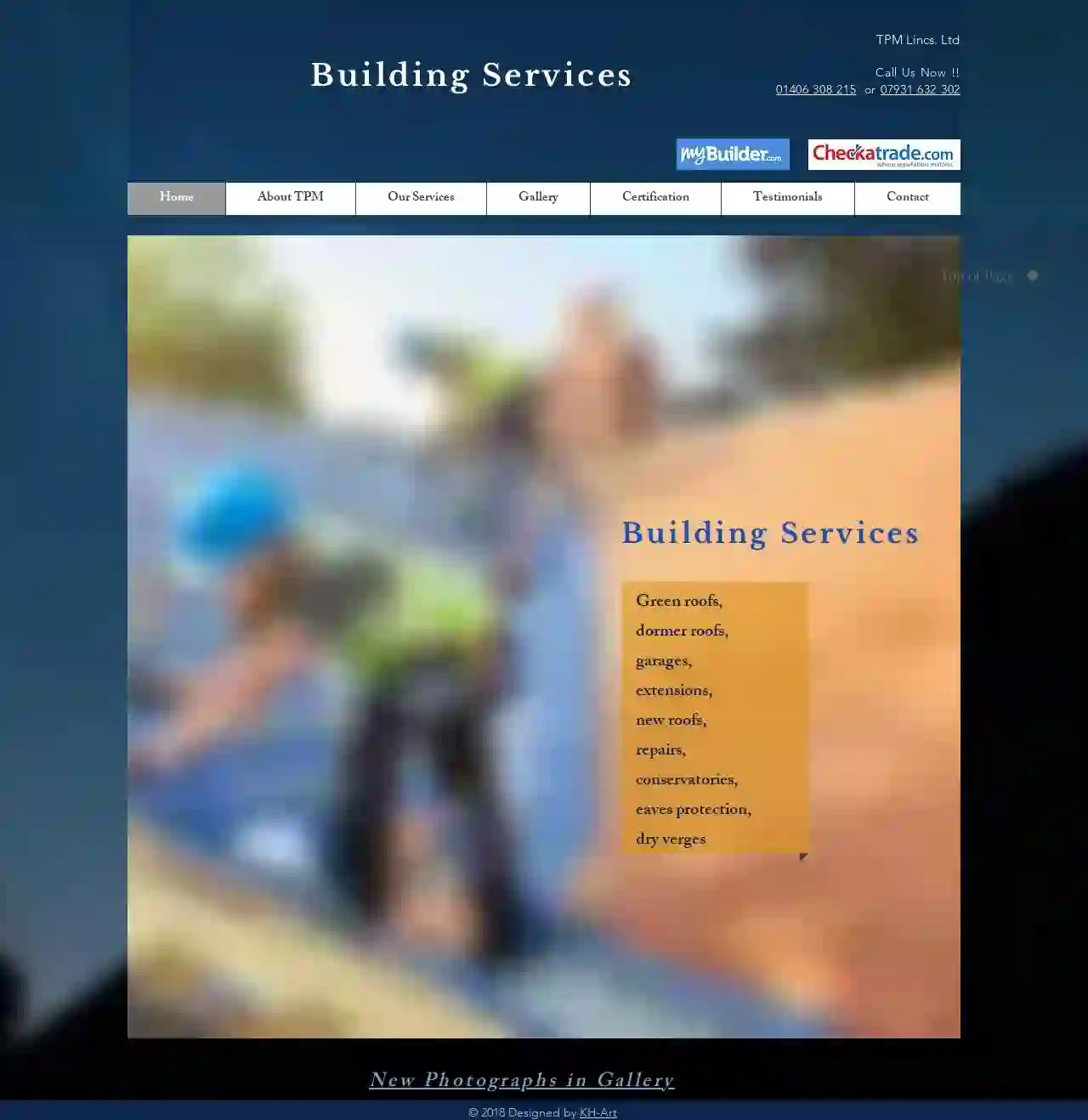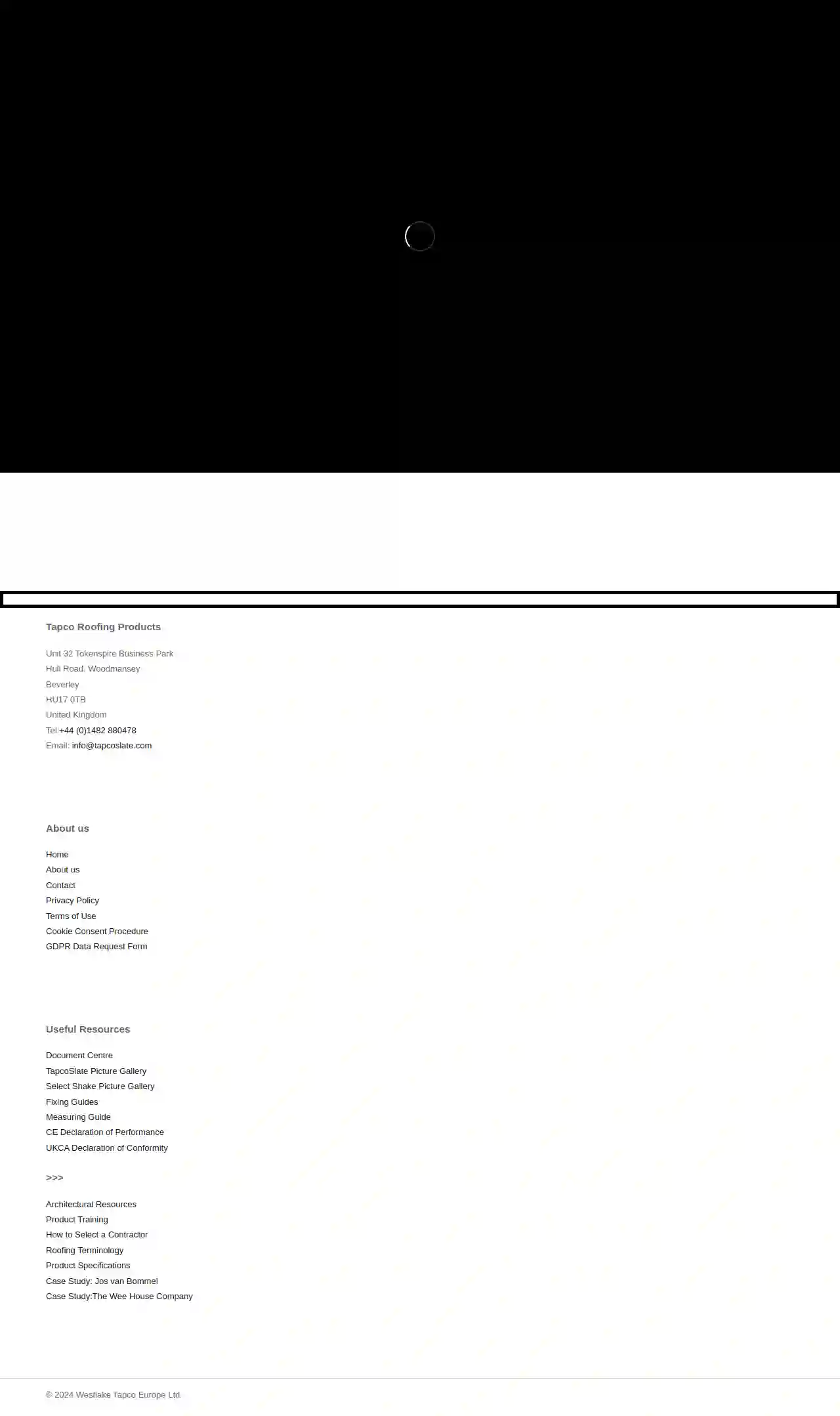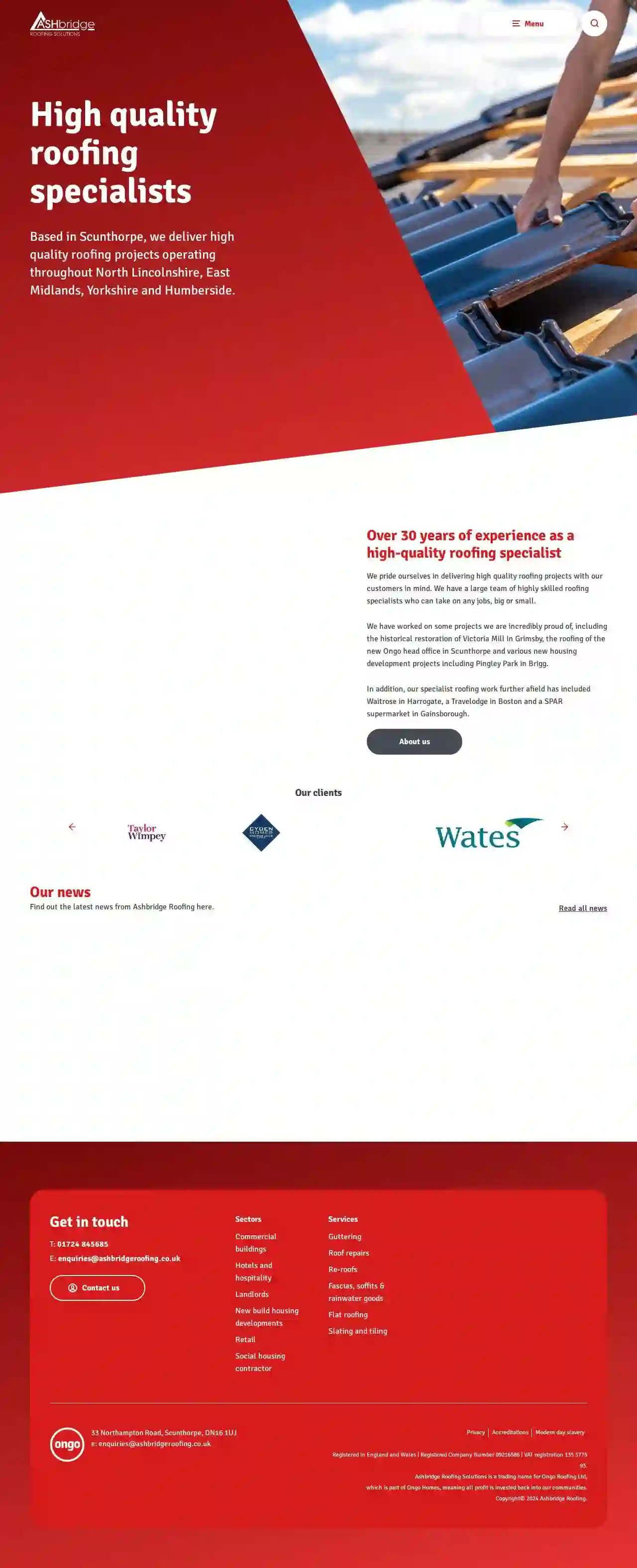Roofing Companies Laceby
Find the best Roofing Companies in Laceby
Get multiple Roofing Contractor quotes for your project today! Compare profiles, reviews, accreditations, portfolio, etc... and choose the best deal.
- JB
JBJ Roofing Services
1000 S. Broadway, Suite 100, Santa Maria, 93001, GB- Services
- Why Us?
- Gallery
Get Quote 
Andrew & Co Ltd.
4.7127 reviewsLittle London, Welland Sawmills, Spalding, PE11 2UJ, GBWe are Andrew & Co Ltd, a well-established name in the Spalding, Lincolnshire community, and the leading supplier of timber and sheet materials in the area. For over 70 years, we've been providing DIY enthusiasts and professionals alike with a wide range of high-quality products for all their project needs. Whether you're tackling a small home improvement or a larger construction project, our extensive inventory and knowledgeable staff are here to help you find exactly what you're looking for. We pride ourselves on offering competitive prices, exceptional customer service, and a commitment to quality. Our team is passionate about helping our customers succeed, and we're always happy to offer advice and guidance on your next project. Visit our shop today and experience the Andrew & Co Ltd difference!
- Services
- Why Us?
- Gallery
Get Quote
Yorkshire Conservatory Insulations
55 reviewsGBYorkshire Conservatory Insulations are the leading conservatory roof insulation specialists in the region. We transform your conservatory ceiling to create a cosy, warm and dry all-year-round living space. Our insulated panels are engineered in Germany exclusively for us and are packed with a thick layer of high-density foam insulation, which stops heat from escaping or entering the existing roof. Unlike polycarbonate or glass roofing which lasts around 10-15 years, our insulated conservatory roof panels last far longer, making this system a true investment. Our panels are compatible with most conservatory roof panel styles and are designed to prevent leaks and keep your living space comfortable and protected throughout the year. We offer a range of conservatory roof styles including Lean-to, Victorian, Edwardian, Gable and Apex Gable. We can also transform your conservatory roof to create a tiled look at a more cost-effective price than a traditional tiled roof. Our conservatory roofs are carried out to the highest of standards and can come in aluminium or UPVC and in a range of colours to suit the style of your conservatory.
- Services
- Why Us?
- Gallery
Get Quote
Ideal Roofing Limited
4.25 reviews38 Buckingham Rd, Thorpe Green, IP30 3ZP, GBIdeal Roofing Limited is a fully insured and accredited roofing contractor specializing in new roofs, GRP fibreglass roofs, reroofing, flat roofs, and roof repair in Scarborough, Hull and surrounding areas. We are experienced roofing contractors offering a variety of roofing services in Bridlington, Scarborough and surrounding areas. We are experts in domestic and commercial roofs and have over 50 years combined experience working with both domestic and commercial clients. We have built up a solid reputation as trusted roofing contractors and can help with fibreglass roofs, flat roofs, reroofing and roof repair services.
- Services
- Why Us?
- Gallery
Get Quote
TPM Lincs Ltd
55 reviewsSpalding, GBTPM Building Services TPM Lincs. Ltd is a roofing company based in Lincolnshire. They offer a wide range of roofing services, including new roofs, repairs, extensions, garages, and green roofs. They are a trusted roofing company with a team of experienced professionals.
- Services
- Why Us?
- Gallery
Get Quote
Westlake Tapco Europe Ltd (Tapco Roofing Products)
4.84 reviewsHull Road, Woodmansey, Unit 32 Tokenspire Business Park, Beverley, HU17 0TB, GBTapco® Roofing Products, Royal® Building Products, DaVinci® Roofscapes and Boral® Building Products — are now part of the Westlake Royal Building Products™ Family. Tapco Slate Classic is a lightweight, durable and aesthetically pleasing roofing slate that offers a traditional look with modern performance. It is ideal for a wide range of applications, including new builds, renovations and extensions. Our products are designed to meet the highest standards of quality and performance, and we are committed to providing our customers with exceptional service and support. We offer a comprehensive range of roofing products, including slates, shakes, underlay, ventilation and accessories. Our products are available through a network of approved distributors across the UK. We are a leading supplier of roofing products in the UK, and we are proud to be a trusted partner for builders, contractors and homeowners alike. Contact us today to learn more about our products and services.
- Services
- Why Us?
- Accreditations
- Our Team
- Testimonials
- Gallery
Get Quote
The lincoln roofing company
GBLincolnshire Roofing Network is a network of trusted roofing professionals serving Lincolnshire and surrounding areas. We offer a wide range of roofing services for both residential and commercial properties, including roof repairs, flat roofing, pitched roofing, fascias and soffits, and more. Our members are highly skilled and experienced, and they are committed to providing high-quality workmanship at competitive prices. We understand that your roof is a vital part of your home or business, and we take pride in providing reliable and durable roofing solutions. Whether you need a small repair or a complete roof replacement, Lincolnshire Roofing Network can help.
- Services
- Why Us?
- Gallery
Get Quote
Ashbridge Roofing
46 reviews33 Northampton Road, Scunthorpe, DN16 1UJ, GBBased in Scunthorpe, we deliver high quality roofing projects operating throughout North Lincolnshire, East Midlands, Yorkshire and Humberside. We pride ourselves in delivering high quality roofing projects with our customers in mind. We have a large team of highly skilled roofing specialists who can take on any jobs, big or small.We have worked on some projects we are incredibly proud of, including the historical restoration of Victoria Mill in Grimsby, the roofing of the new Ongo head office in Scunthorpe and various new housing development projects including Pingley Park in Brigg.In addition, our specialist roofing work further afield has included Waitrose in Harrogate, a Travelodge in Boston and a SPAR supermarket in Gainsborough.
- Services
- Why Us?
- Gallery
Get Quote
Brooks & Sons Roofing
4.816 reviews6 Marsh Lane Gardens, Kellington, DN14 0PG, GBBrooks and Sons Roofing is a family-run business based in Kellington, serving customers in York, Selby, Doncaster, and East Yorkshire. With over 23 years of combined experience, they specialize in both domestic and commercial roofing services, using modern materials to ensure high-quality workmanship. Their services include roof repairs and installations, fascias and soffits, pitched and flat roofs, guttering, leadwork, and more. They also offer an emergency callout service for urgent repairs. Founded in 2010, Brooks and Sons Roofing is committed to providing cost-effective and reliable roofing solutions, with a focus on attention to detail and customer satisfaction.
- Services
- Why Us?
Get Quote
Peterborough Improvements
4.588 reviews123 Main St, Peterborough, PE1 1XX, GBWelcome to Peterborough Improvements, the No.1 Home Improvement and Property Maintenance Company. We have the know-how to take care of all your home improvement or property maintenance needs, with professionals in every area. Whether you want to convert your garage into a new living space or have your garden designed and landscaped from scratch, we can take care of your project from start to finish. For your free consultation, give our friendly team a call today on 01733 306022. We offer a wide range of services including Driveways, Fencing and Gates, Decking, Roofing Installations and Repairs, Dropped Kerb Installation, Garden Services, Landscaping, Patio and Paving Areas, Garage Conversions, House Extensions & Building Work, Bespoke Garden Rooms & Mancaves, Smart Home Installation, Windows and Doors, Kitchen Fitting, Tiling, Floor and Carpet Fitting, and Cleaning Services.
- Services
- Why Us?
- Accreditations
- Gallery
Get Quote
Over 12,314+ Roofers on our platform
Our roofing contractors operate in Laceby & surrounding areas!
Roofyng.co.uk has curated and vetted Top Roofing Businesses in and around Laceby. Find the most trustworthy business today.
Frequently Asked Questions About Roofing Companies
- Experience: 'How long have you been in business, and what experience do you have with my type of roof?'
- Licensing and insurance: 'Are you licensed and insured, and can I see proof of coverage?'
- Warranties: 'What warranties do you offer on your work and the materials used?'
- References: 'Can you provide references from past clients?'
- Project Timeline: 'What is the estimated timeline for completing the project?'
- Payment Terms: 'What are your payment terms, and do you require a deposit?'
- Communication: 'How will you keep me updated on the project's progress?'
- Cleanup: 'What steps will you take to protect my property during the project and ensure proper cleanup afterward?'
- Clear the Area: Remove any vehicles, outdoor furniture, or other items from around your house to provide the roofing crew with easy access.
- Protect Landscaping: Cover plants, shrubs, and other landscaping elements near the house with tarps or plastic sheeting to protect them from falling debris.
- Clear the Attic: Remove or cover items stored in your attic, as dust and debris might fall through during the removal of the old roof.
- Notify Neighbors: It's courteous to inform your neighbors about the upcoming roof replacement project, especially if it's likely to be noisy or disruptive.
- Discuss Logistics with the Contractor: Coordinate with the roofing contractor regarding access to your property, parking arrangements, and any special instructions or concerns you have.
- Leaks or Water Stains: Water stains on ceilings or walls, dripping water, or dampness in the attic.
- Missing, Cracked, or Curled Shingles: Inspect for damaged or missing shingles, especially after a storm.
- Damaged Flashing: Look for rust, corrosion, or gaps in flashing around chimneys, vents, or skylights.
- Sagging or Uneven Rooflines: A sagging roof could indicate structural problems.
- Granule Loss: Excessive granules in gutters suggest aging asphalt shingles.
- Moss or Algae Growth: Can trap moisture and damage roofing materials.
What should I do with my old roof after replacement?
What questions should I ask a roofing contractor?
How do I prepare for a roof replacement?
What are some common signs of roof damage?
What should I do with my old roof after replacement?
What questions should I ask a roofing contractor?
- Experience: 'How long have you been in business, and what experience do you have with my type of roof?'
- Licensing and insurance: 'Are you licensed and insured, and can I see proof of coverage?'
- Warranties: 'What warranties do you offer on your work and the materials used?'
- References: 'Can you provide references from past clients?'
- Project Timeline: 'What is the estimated timeline for completing the project?'
- Payment Terms: 'What are your payment terms, and do you require a deposit?'
- Communication: 'How will you keep me updated on the project's progress?'
- Cleanup: 'What steps will you take to protect my property during the project and ensure proper cleanup afterward?'
How do I prepare for a roof replacement?
- Clear the Area: Remove any vehicles, outdoor furniture, or other items from around your house to provide the roofing crew with easy access.
- Protect Landscaping: Cover plants, shrubs, and other landscaping elements near the house with tarps or plastic sheeting to protect them from falling debris.
- Clear the Attic: Remove or cover items stored in your attic, as dust and debris might fall through during the removal of the old roof.
- Notify Neighbors: It's courteous to inform your neighbors about the upcoming roof replacement project, especially if it's likely to be noisy or disruptive.
- Discuss Logistics with the Contractor: Coordinate with the roofing contractor regarding access to your property, parking arrangements, and any special instructions or concerns you have.
What are some common signs of roof damage?
- Leaks or Water Stains: Water stains on ceilings or walls, dripping water, or dampness in the attic.
- Missing, Cracked, or Curled Shingles: Inspect for damaged or missing shingles, especially after a storm.
- Damaged Flashing: Look for rust, corrosion, or gaps in flashing around chimneys, vents, or skylights.
- Sagging or Uneven Rooflines: A sagging roof could indicate structural problems.
- Granule Loss: Excessive granules in gutters suggest aging asphalt shingles.
- Moss or Algae Growth: Can trap moisture and damage roofing materials.